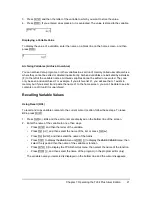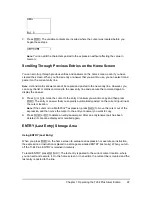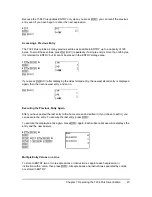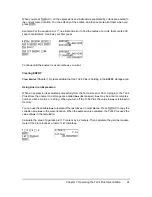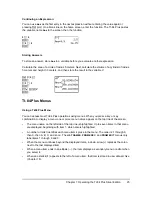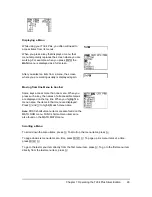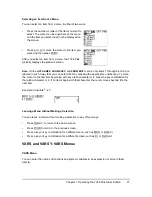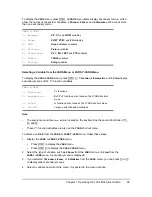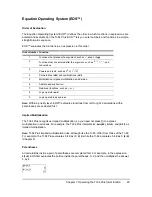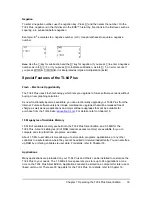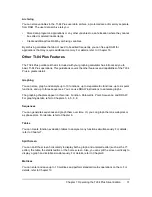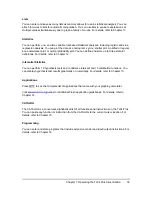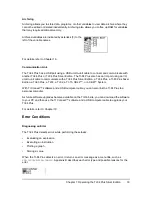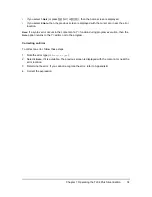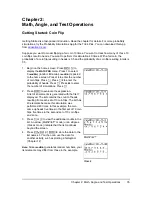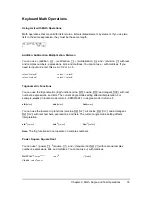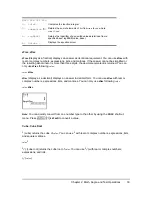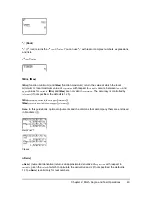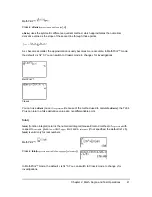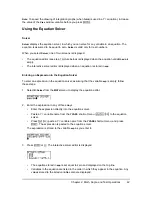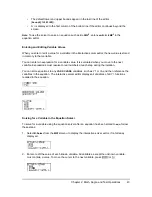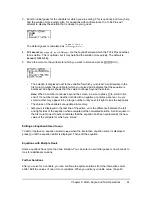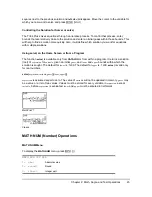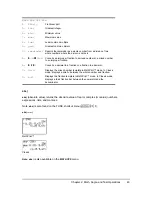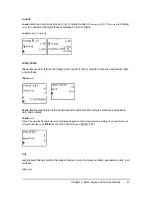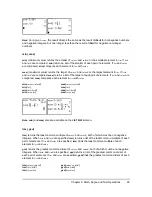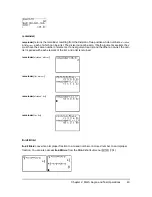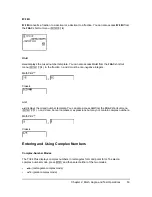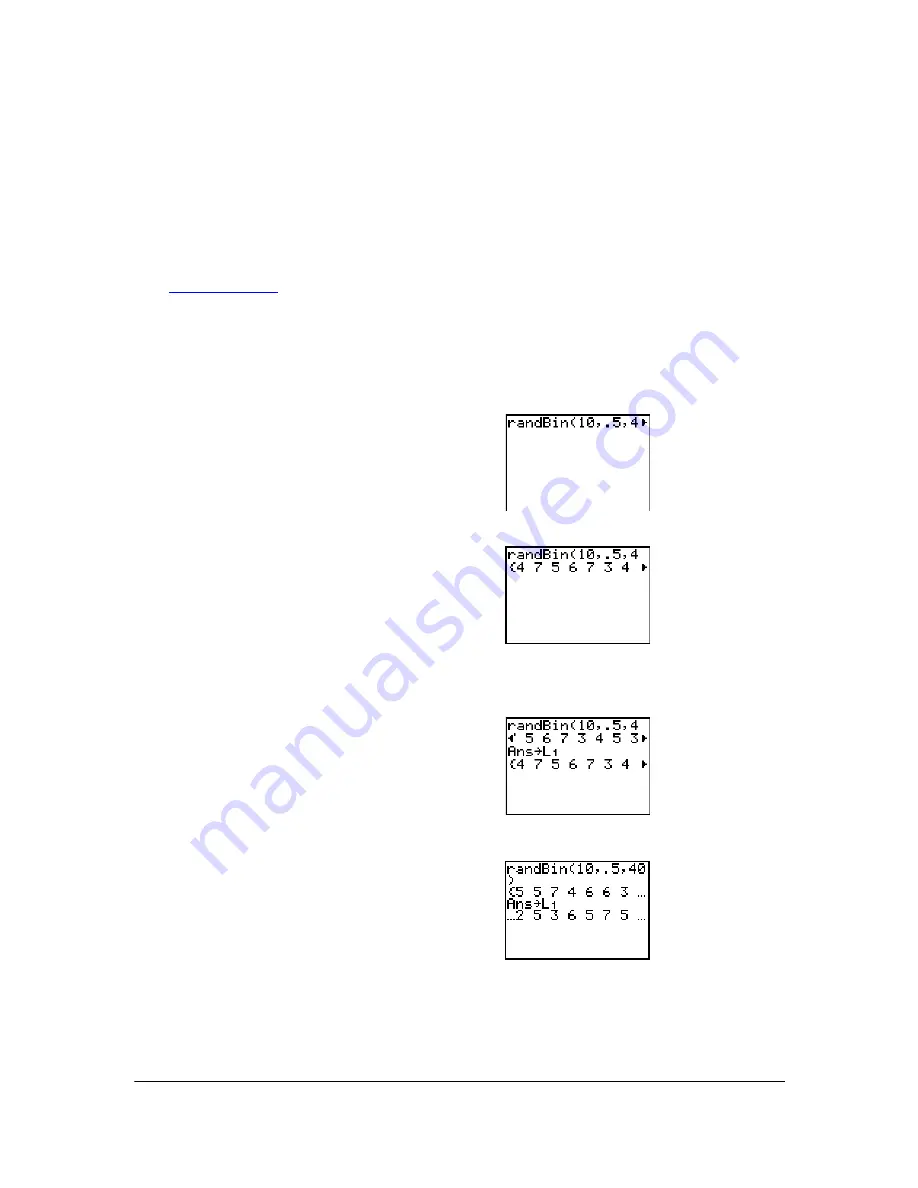
Chapter 2: Math, Angle, and Test Operations
35
Chapter 2:
Math, Angle, and Test Operations
Getting Started: Coin Flip
Getting Started is a fast-paced introduction. Read the chapter for details. For more probability
simulations, try the Probability Simulations App for the TI-84 Plus. You can download this App
from
.
Suppose you want to model flipping a fair coin 10 times. You want to track how many of those 10
coin flips result in heads. You want to perform this simulation 40 times. With a fair coin, the
probability of a coin flip resulting in heads is 0.5 and the probability of a coin flip resulting in tails is
0.5.
1. Begin on the home screen. Press
|
to
display the
MATH PRB
menu. Press
7
to select
7:randBin(
(random Binomial).
randBin(
is pasted
to the home screen. Press
10
to enter the number
of coin flips. Press
¢
. Press
Ë
5
to enter the
probability of heads. Press
¢
. Press
40
to enter
the number of simulations. Press
¤
.
2. Press
Í
to evaluate the expression.
A list of 40 elements is generated with the first 7
displayed. The list contains the count of heads
resulting from each set of 10 coin flips. The list has
40 elements because this simulation was
performed 40 times. In this example, the coin
came up heads five times in the first set of 10 coin
flips, five times in the second set of 10 coin flips,
and so on.
3. Press
~
or
|
to view the additional counts in the
list. An arrow (MathPrint™ mode) or an ellipses
(Classic mode) indicate that the list continues
beyond the screen.
4. Press
¿
y
d
Í
to store the data to the
list name
L1
. You then can use the data for
another activity, such as plotting a histogram
(Chapter 12).
Note:
Since
randBin(
generates random numbers, your
list elements may differ from those in the example.
MathPrint™
Classic

